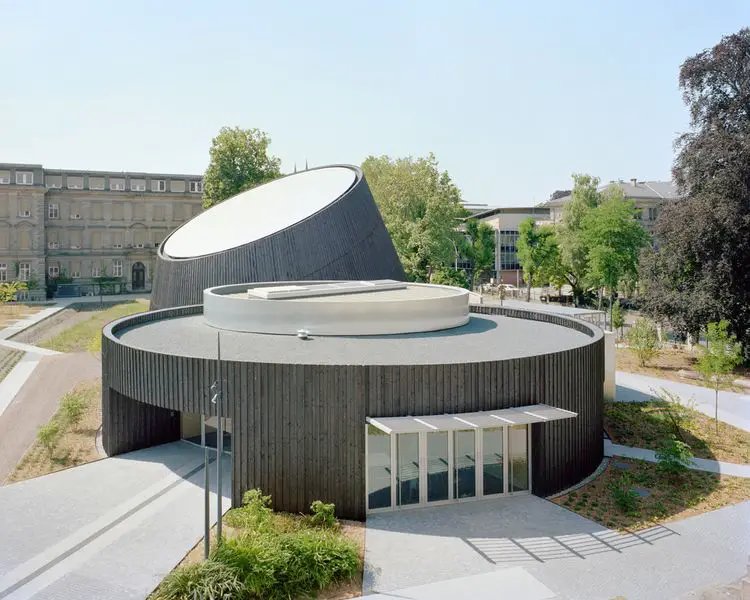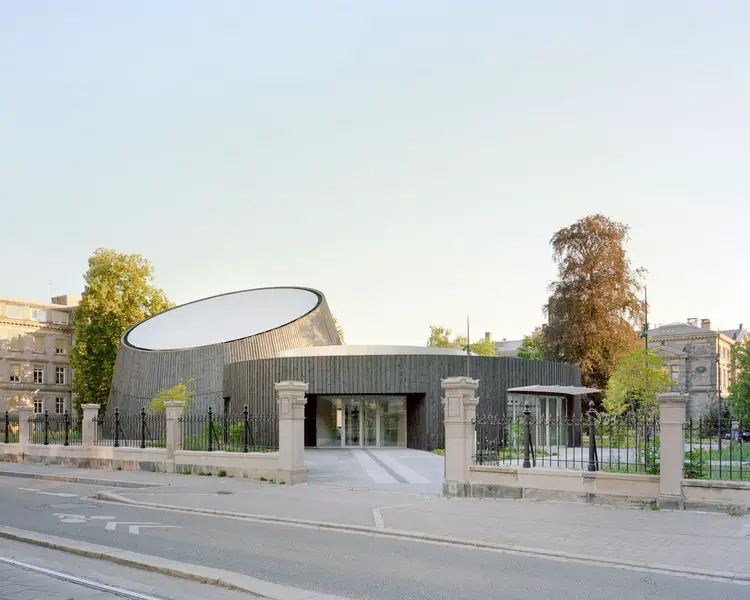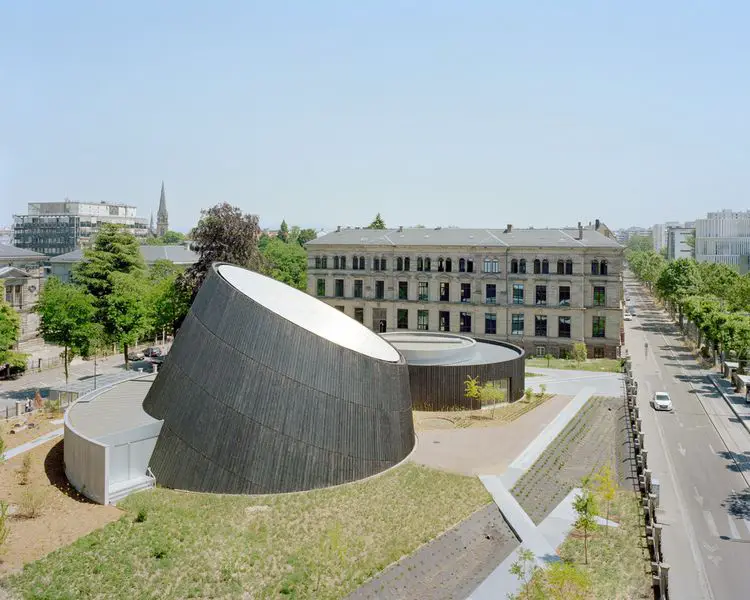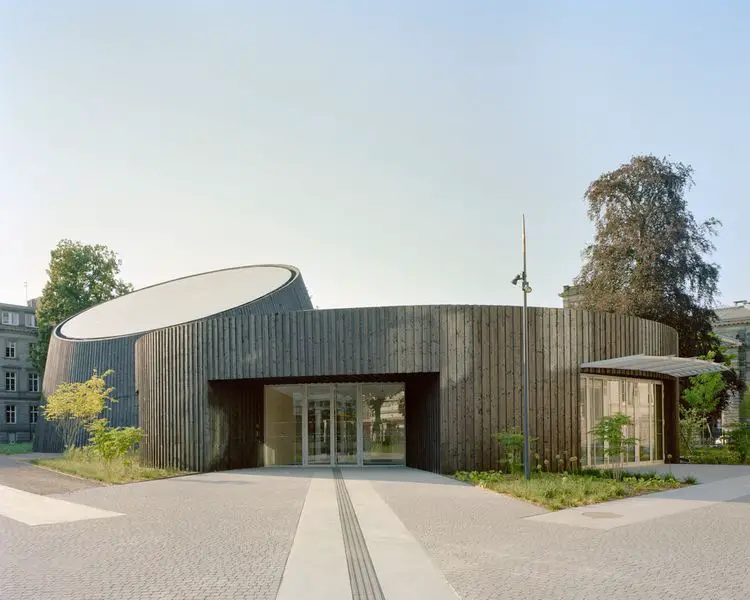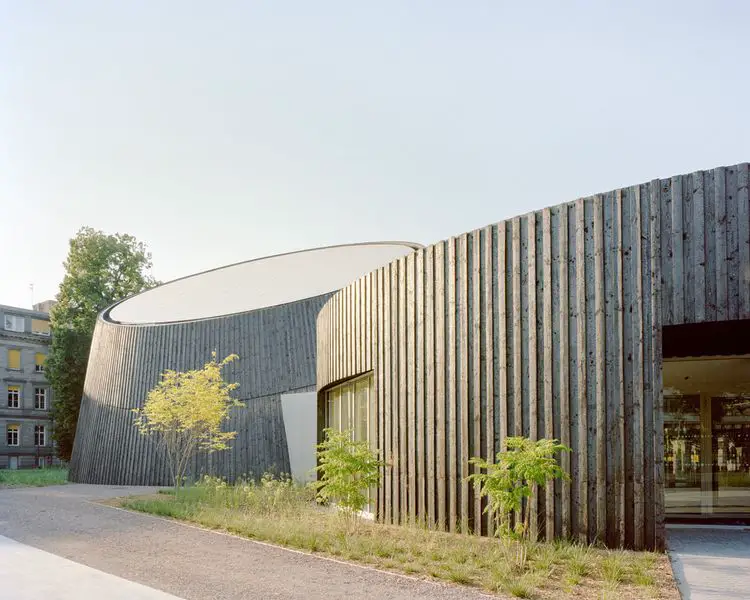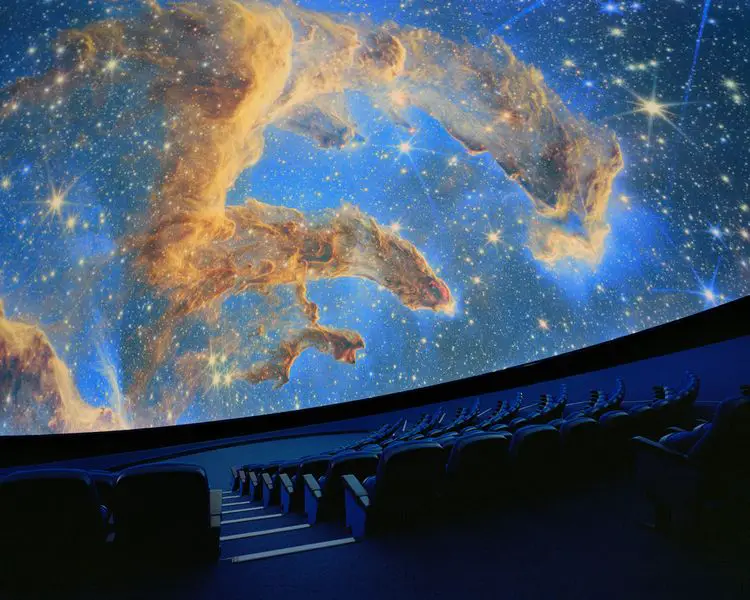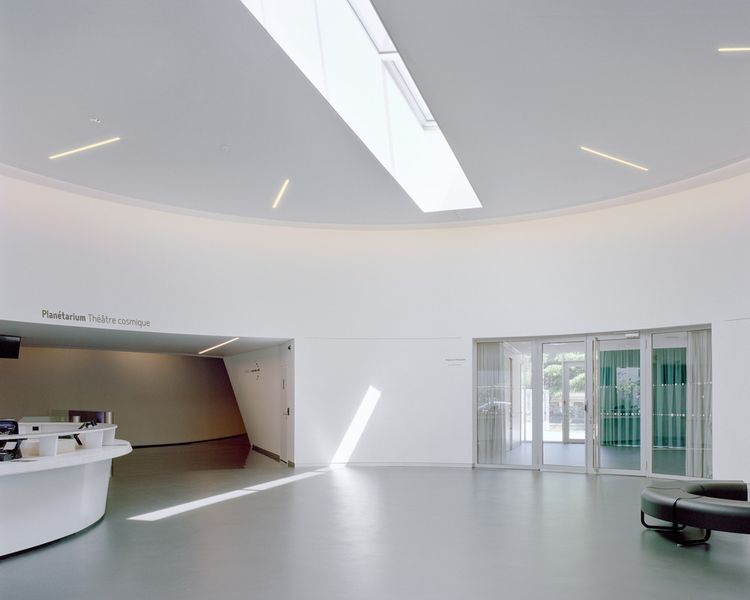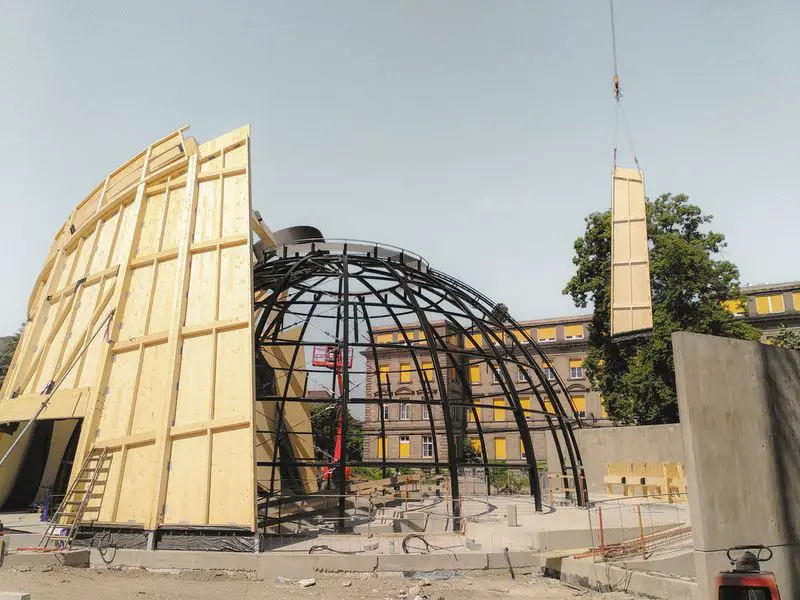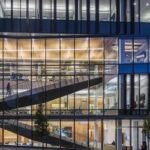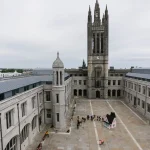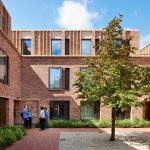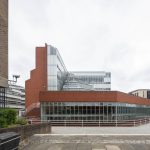The Planétarium, Université de Strasbourg, Western French architecture photos, French university building
The Planétarium at the Université de Strasbourg
28 September 2023
Architecture: frenak+jullien, Cardin Julien, and m+mathieu
Location: 27 Boulevard de la Victoire, 67000 Strasbourg, France
The Planétarium, Strasbourg
frenak+jullien, Cardin Julien, and m+mathieu holdrinet proudly introduce their work on the new Planétarium du Jardin des sciences, which has opened its doors in a redesigned garden located at the heart of the Université de Strasbourg. Located along Avenue de la Victoire, its strategic position makes it a beacon in the city.
To picture the sky, imagine the cosmos, talk about astronomy: the program’s dreamlike dimension inspired the architectural team led by frenak+jullien (France), with Cardin Julien (Canada), associate architects, and m+mathieu holdrinet (France), project architect, helping to create the building’s singular form.
A connection to the sky and the earth
Situated between the imposing Zoology and Geology institutes, the planetarium is made up of two dark volumes that stand out against the garden’s abundant greenery: a truncated cone to house the 138-seat projection room and its entrance gallery; a cylindrical volume to accommodate the lobby of the Jardin des sciences and related services. Reaching for the sky, the truncated cone suggests a timeless quest for knowledge of the universe, while the open and radiant lobby points towards the many sites managed by the Jardin des sciences. Dedicated to the dissemination of scientific culture within the university, the Jardin des Sciences thus gains new visibility.
Machine-building
The structure’s unusual geometry is reminiscent of the 19th-century machine-buildings found on the site, such as the observatory’s dome and pavillons des mires, and evokes astronomical measuring instruments such as the astrolabe. For passersby, the cone’s metal disc beckons and reacts to the changing colours of the sky; for local residents overlooking the site, the planetarium’s fifth façade evokes an astronomical instrument set in a garden.
A fruitful duality
The two elements, the planetarium and the reception area, consist of shared components, but are put together in opposite ways. Turned inward, the planetarium is empty around the perimeter (the access corridor to the auditorium) and full at its centre (the auditorium), while the reception area, which opens outward to the garden, is empty at its centre (the hall) and is surrounded by a ring of buildings. One is bright and opens onto the sky through a glass roof shaped like a sundial, while the other is plunged into darkness, to create the artificial sky of the cosmic theatre.
Conditioning and immersion
Tucked between the cone’s hemisphere and its inner face, the slightly slanted circular gallery offers a spatial experience in which one goes from the brightness of the hall to the penumbra essential to the cosmic theatre, where artificial skies are made. The CLT wood panels of the exposed structure rise to a height of 17 metres, forming giant facets; a vastness that prepares one for a journey into space. The gently sloping ramp leads the spectator to the top of the auditorium, beneath the projection dome whose suspension and inclination heighten the immersive effect. The lighting is minimal, illuminating a night blue environment with a high absorption coefficient. The 6 digital projectors laid out around the perimeter are accessible via the technical gallery that surrounds the room.
Russian dolls
The nestled volumes (cone, dome, screen) and the precision required for the suspension of the projection screen led to special constructive solutions. It involved an atypical assembly logic during the building phase, such as the mounting of the planetarium’s metal dome prior to that of the cone’s covered enclosure
Burnt wood, light-coloured wood, compactness: an environmental and aesthetic concern
Burnt wood and aluminum on the outside, light-coloured wood and plaster on the inside: the materials used for the building are few, simple, and contrasting. On the outside, the building’s telluric or volcanic appearance is reinforced by a charred film of Douglas fir slats, whose deep brown-black texture takes on silvery reflections in low-angled sunlight. Inside, light-coloured wood panels take over, contributing to the hall’s bright atmosphere. The compactness of the building, and the positioning of the openings on the hall side, greatly limit the building’s heat loss, thus ensuring optimal environmental performance.
The Jardin des sciences, a public garden
Running between the two streets, the garden is designed as a succession of plant environments, from shady undergrowth in the north, to tree-dotted meadows in the south. In addition to the beautiful existing trees, high-growing trees and flowering shrubs will create a woodland atmosphere with strong autumnal colors, mirroring the diversity of the nearby Botanical Gardens. To the south, a long plant-covered ditch regulates rainwater and broadens the ecosystems’ range. To accent the site, 8 circular gardens (the constellations) feature a variety of plants and mineral mulches, which echo the institutes of Zoology and Geology, as well as the Botanical Garden, while also alluding to the solar system’s 8 planets.
The Planétarium, Université de Strasbourg – Building Information
Project name: Planétarium du Jardin des sciences de l’Université de Strasbourg
Location: 27 Boulevard de la Victoire, 67000 Strasbourg, France
Client: UNISTRA – Université de Strasbourg
Program: 15 m diameter projection room with services, Jardin des sciences reception area, cafeteria, educational room and store.
Competition: Invited competition, winning project (2016)
Opening: Summer 2023
Floor area: Building 1000 m2, garden 5000 m2
138-seat screening room
Construction cost: 5 000 000 € excl. tax (including garden)
Project team
Architecture
frenak+jullien lead architects
Cardin Julien, associate architects
m+ mathieu holdrinet, project architect
Landscape architecture: FORR
Structural engineering: MaP3
Mechanical-electrical engineering, energy efficiency and sustainable development: Espace Temps
Civil engineering: OTE
Scenography: dUCKS sceno
Acoustics: Lamoureux
Signage: Téra-création
Economy: Echoes
Construction
Wood framing: Charpente Houot
Structural works: Bringholf Constructions
Dome metal structure and plaster: ADLER, SIRC
Insulated burnt wood cladding: Martin Fils
Metal cladding: Schoenenberger
frenak+jullien, lead architects
frenak+jullien has been involved in public projects since 2007. Whether restructuring, enlarging, or constructing new buildings, the firm always works in resonance with the spirit of the places it transforms and reinvents. The firm has built numerous museums, libraries, and art centres, as well as schools and healthcare facilities.
The firm designs the architecture, scenography, and interior design of spaces, and it excels at working in various scales, ranging from the minutest detail to urban strategies, with an emphasis on technical synthesis at the service of the project. Taking into account architecture’s environmental impact, the firm’s work focuses on bioclimatic solutions and the use of less carbon-intensive materials. The Planétarium du Jardin des sciences at Université de Strasbourg, delivered in 2023 and built entirely of wood (structure and facades), is a case in point.
Cardin Julien, associate architects
Founded in Montreal in 1992, Cardin Julien is an architecture firm that conceives and produces major projects in the public and private sectors. The firm specializes in the design of public and cultural buildings serving the community. Guided by the principles of sustainable development, Cardin Julien proposes distinctive designs that are in harmony with their surroundings.
Through the durability, innovation, and aesthetic appeal of its creations, the firm aims to leave an impression on both minds and hearts. Following its success in numerous architectural competitions, Cardin Julien has carried out several major cultural projects, including the Rio Tinto Alcan Planetarium in Montreal (with Aedifica), the Planétarium du Jardin des sciences at Université de Strasbourg (with frenak+jullien and m+ mathieu holdrinet), and Cosmocité in Grenoble (with Arcane Architectes).
m+ mathieu holdrinet, project architect
A 2005 graduate of the École nationale supérieure d’architecture de Paris-Malaquais, Mathieu Holdrinet founded the m+ agency in 2010. The agency’s primary goal is to ensure quality meter per meter: m+. The firm is committed to delivering sustainable responses on an urban and architectural scale.
Emphasis is placed on the relevance of urban integration and the constructive quality of each project, with a predilection for timber-frame construction. With its m+ carpenter and m+ architects, the studio occasionally joins forces with other architectural firms to reenergize its activities and enter into partnerships with carpenters at the outset of projects in order to better share their know-how. m+ do better with less.
Photo credits © Maxime Delvaux
The Planétarium, Université de Strasbourg, France images / information received 280923
Location: Strasbourg, France, western Europe
New Buildings by Populous in France
West French Architectural Designs by Populous
FFR Grand Stade Building News, Essone, Île-de-France, south west Paris
Design: Populous + Ateliers 2/3/4/
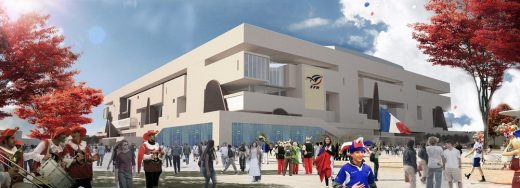
image © Populous/Ateliers 2/3/4
FFR Grand Stade Building
Olympique Lyonnais Stadium, Lyon, southern France – UEFA Euro 2016 venue
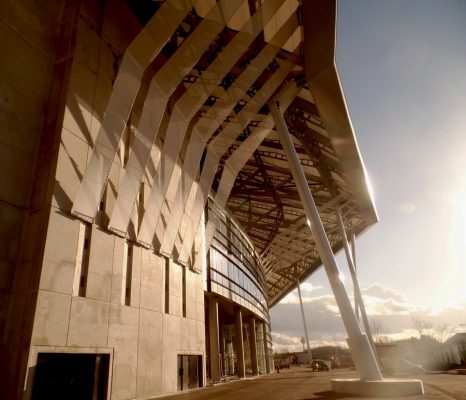
picture from architect
Olympique Lyonnais Stadium UEFA Euro 2016 venue
Orleans Buildings
Architectural Designs in Centre-Val de Loire region, north of France – selection:
FRAC Centre Orléans
Design: Jakob+MacFarlane Architectes
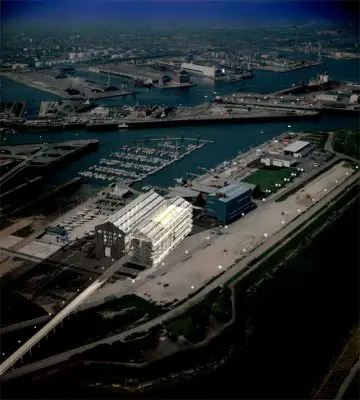
picture Courtesy Lacaton & Vassal
FRAC Centre Orléans
Orleans Médiathèque
Design: Du Besset-Lyon Architectes
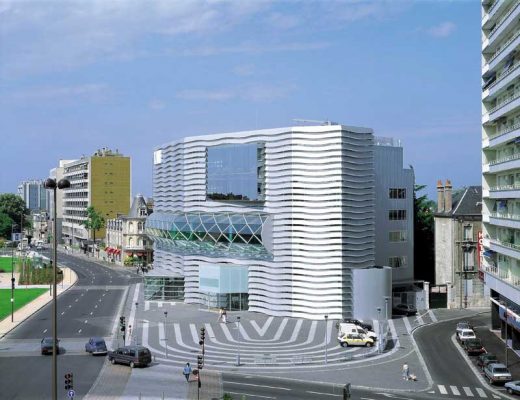
picture from architects office
Orleans Mediatheque
New Buildings in France
French Architectural Projects
Design: LOCAL and Suphasidh Studio
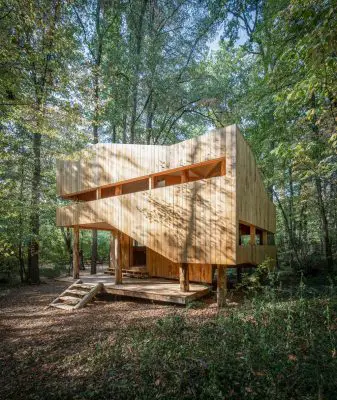
photo : Atelier Vincent Hecht
100% wooden house Montlouis-sur-Loire
Carillon d’Angélus Cellar, Libourne, Gironde department, Nouvelle-Aquitaine, southwestern France
Design: Architecte DPLG
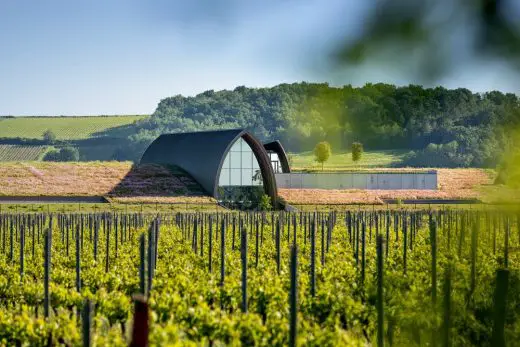
photo : Deepix
New Carillon d’Angélus Cellar, Libourne
Bioclimatic House in the Gulf of Morbihan, Baden, Brittany, Northwest France
Design: Patrice Bideau
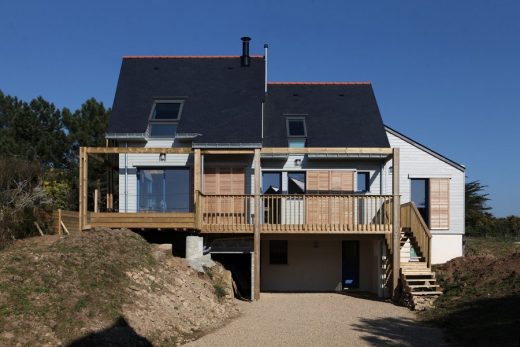
photograph : Armel Istin
Bioclimatic House in the Gulf of Morbihan
French Architectural Designs
Contemporary French Architectural Designs
French Architect Offices – design firm listings
French Architecture Tours in Paris by e-architect
Comments / photos for the The Planétarium at the Université de Strasbourg buildign design by frenak+jullien, Cardin Julien, and m+mathieu page welcome.

